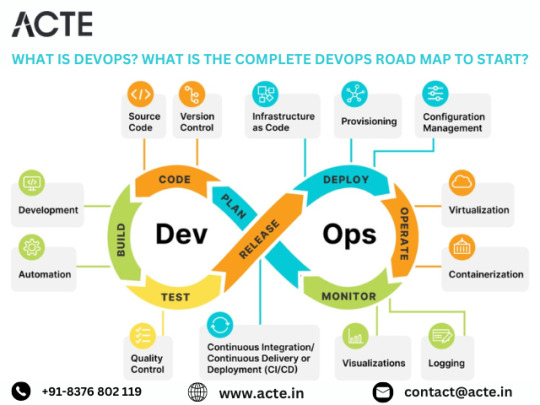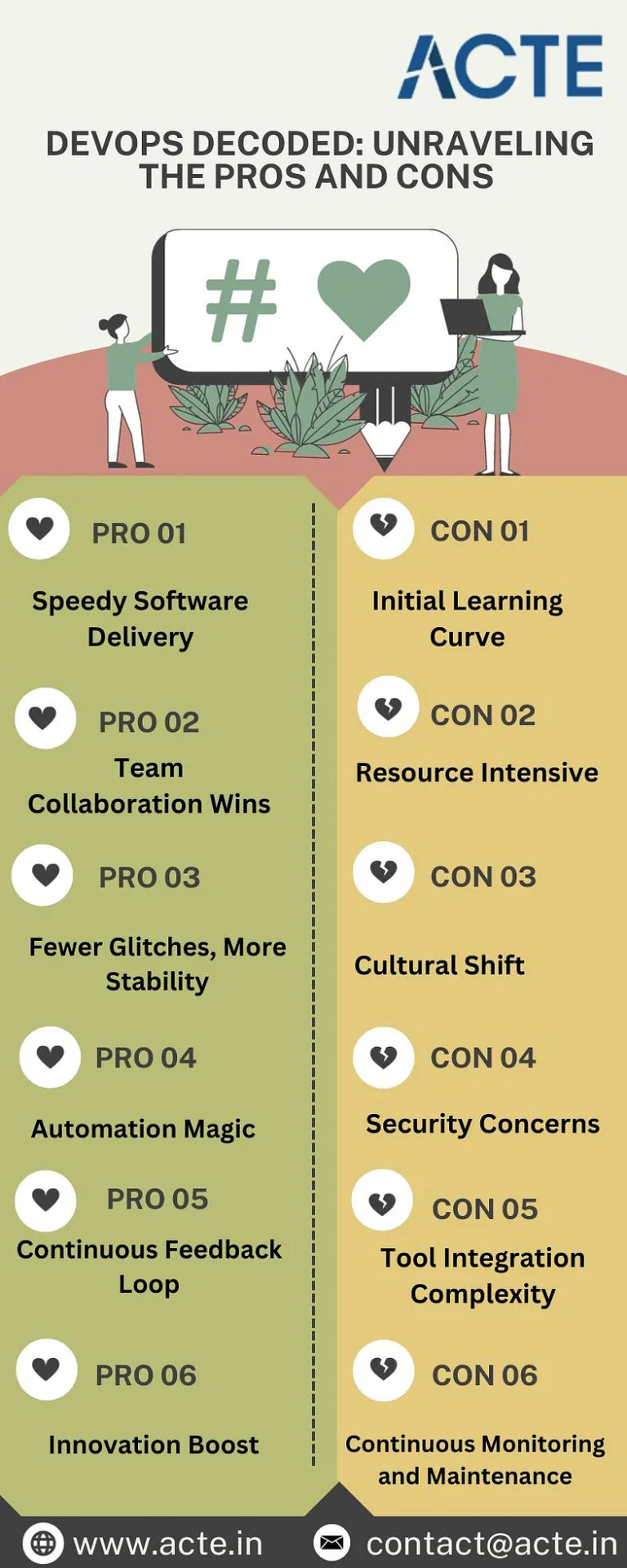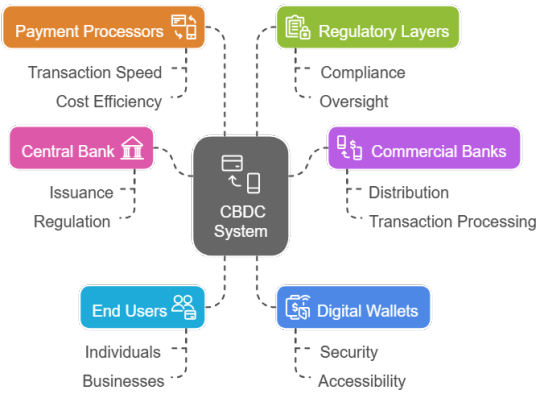#Steps of DevOps Implementation
Explore tagged Tumblr posts
Text
#DevOps Consulting Services#DevOps Implementation Services#Steps of DevOps Implementation#Strategies of DevOps Implementation#Successful DevOps implementation
0 notes
Text
Enhance efficiency in your software development lifecycle with DevOps roadmap. In this article, you can find a DevOps implementation steps tailored for success.
0 notes
Text
Unlock the keys to successful DevOps implementation with our comprehensive guide. Explore expert strategies and actionable steps tailored for seamless integration into your organization.
0 notes
Text
The Roadmap to Full Stack Developer Proficiency: A Comprehensive Guide
Embarking on the journey to becoming a full stack developer is an exhilarating endeavor filled with growth and challenges. Whether you're taking your first steps or seeking to elevate your skills, understanding the path ahead is crucial. In this detailed roadmap, we'll outline the stages of mastering full stack development, exploring essential milestones, competencies, and strategies to guide you through this enriching career journey.

Beginning the Journey: Novice Phase (0-6 Months)
As a novice, you're entering the realm of programming with a fresh perspective and eagerness to learn. This initial phase sets the groundwork for your progression as a full stack developer.
Grasping Programming Fundamentals:
Your journey commences with grasping the foundational elements of programming languages like HTML, CSS, and JavaScript. These are the cornerstone of web development and are essential for crafting dynamic and interactive web applications.
Familiarizing with Basic Data Structures and Algorithms:
To develop proficiency in programming, understanding fundamental data structures such as arrays, objects, and linked lists, along with algorithms like sorting and searching, is imperative. These concepts form the backbone of problem-solving in software development.
Exploring Essential Web Development Concepts:
During this phase, you'll delve into crucial web development concepts like client-server architecture, HTTP protocol, and the Document Object Model (DOM). Acquiring insights into the underlying mechanisms of web applications lays a strong foundation for tackling more intricate projects.
Advancing Forward: Intermediate Stage (6 Months - 2 Years)
As you progress beyond the basics, you'll transition into the intermediate stage, where you'll deepen your understanding and skills across various facets of full stack development.

Venturing into Backend Development:
In the intermediate stage, you'll venture into backend development, honing your proficiency in server-side languages like Node.js, Python, or Java. Here, you'll learn to construct robust server-side applications, manage data storage and retrieval, and implement authentication and authorization mechanisms.
Mastering Database Management:
A pivotal aspect of backend development is comprehending databases. You'll delve into relational databases like MySQL and PostgreSQL, as well as NoSQL databases like MongoDB. Proficiency in database management systems and design principles enables the creation of scalable and efficient applications.
Exploring Frontend Frameworks and Libraries:
In addition to backend development, you'll deepen your expertise in frontend technologies. You'll explore prominent frameworks and libraries such as React, Angular, or Vue.js, streamlining the creation of interactive and responsive user interfaces.
Learning Version Control with Git:
Version control is indispensable for collaborative software development. During this phase, you'll familiarize yourself with Git, a distributed version control system, to manage your codebase, track changes, and collaborate effectively with fellow developers.
Achieving Mastery: Advanced Phase (2+ Years)
As you ascend in your journey, you'll enter the advanced phase of full stack development, where you'll refine your skills, tackle intricate challenges, and delve into specialized domains of interest.
Designing Scalable Systems:
In the advanced stage, focus shifts to designing scalable systems capable of managing substantial volumes of traffic and data. You'll explore design patterns, scalability methodologies, and cloud computing platforms like AWS, Azure, or Google Cloud.
Embracing DevOps Practices:
DevOps practices play a pivotal role in contemporary software development. You'll delve into continuous integration and continuous deployment (CI/CD) pipelines, infrastructure as code (IaC), and containerization technologies such as Docker and Kubernetes.
Specializing in Niche Areas:
With experience, you may opt to specialize in specific domains of full stack development, whether it's frontend or backend development, mobile app development, or DevOps. Specialization enables you to deepen your expertise and pursue career avenues aligned with your passions and strengths.
Conclusion:
Becoming a proficient full stack developer is a transformative journey that demands dedication, resilience, and perpetual learning. By following the roadmap outlined in this guide and maintaining a curious and adaptable mindset, you'll navigate the complexities and opportunities inherent in the realm of full stack development. Remember, mastery isn't merely about acquiring technical skills but also about fostering collaboration, embracing innovation, and contributing meaningfully to the ever-evolving landscape of technology.
#full stack developer#education#information#full stack web development#front end development#frameworks#web development#backend#full stack developer course#technology
9 notes
·
View notes
Text
What are the latest trends in the IT job market?

Introduction
The IT job market is changing quickly. This change is because of new technology, different employer needs, and more remote work.
For jobseekers, understanding these trends is crucial to positioning themselves as strong candidates in a highly competitive landscape.
This blog looks at the current IT job market. It offers insights into job trends and opportunities. You will also find practical strategies to improve your chances of getting your desired role.
Whether you’re in the midst of a job search or considering a career change, this guide will help you navigate the complexities of the job hunting process and secure employment in today’s market.
Section 1: Understanding the Current IT Job Market
Recent Trends in the IT Job Market
The IT sector is booming, with consistent demand for skilled professionals in various domains such as cybersecurity, cloud computing, and data science.
The COVID-19 pandemic accelerated the shift to remote work, further expanding the demand for IT roles that support this transformation.
Employers are increasingly looking for candidates with expertise in AI, machine learning, and DevOps as these technologies drive business innovation.
According to industry reports, job opportunities in IT will continue to grow, with the most substantial demand focused on software development, data analysis, and cloud architecture.
It’s essential for jobseekers to stay updated on these trends to remain competitive and tailor their skills to current market needs.
Recruitment efforts have also become more digitized, with many companies adopting virtual hiring processes and online job fairs.
This creates both challenges and opportunities for job seekers to showcase their talents and secure interviews through online platforms.
NOTE: Visit Now
Remote Work and IT
The surge in remote work opportunities has transformed the job market. Many IT companies now offer fully remote or hybrid roles, which appeal to professionals seeking greater flexibility.
While remote work has increased access to job opportunities, it has also intensified competition, as companies can now hire from a global talent pool.
Section 2: Choosing the Right Keywords for Your IT Resume
Keyword Optimization: Why It Matters
With more employers using Applicant Tracking Systems (ATS) to screen resumes, it’s essential for jobseekers to optimize their resumes with relevant keywords.
These systems scan resumes for specific words related to the job description and only advance the most relevant applications.
To increase the chances of your resume making it through the initial screening, jobseekers must identify and incorporate the right keywords into their resumes.
When searching for jobs in IT, it’s important to tailor your resume for specific job titles and responsibilities. Keywords like “software engineer,” “cloud computing,” “data security,” and “DevOps” can make a huge difference.
By strategically using keywords that reflect your skills, experience, and the job requirements, you enhance your resume’s visibility to hiring managers and recruitment software.
Step-by-Step Keyword Selection Process
Analyze Job Descriptions: Look at several job postings for roles you’re interested in and identify recurring terms.
Incorporate Specific Terms: Include technical terms related to your field (e.g., Python, Kubernetes, cloud infrastructure).
Use Action Verbs: Keywords like “developed,” “designed,” or “implemented” help demonstrate your experience in a tangible way.
Test Your Resume: Use online tools to see how well your resume aligns with specific job postings and make adjustments as necessary.
Section 3: Customizing Your Resume for Each Job Application
Why Customization is Key
One size does not fit all when it comes to resumes, especially in the IT industry. Jobseekers who customize their resumes for each job application are more likely to catch the attention of recruiters. Tailoring your resume allows you to emphasize the specific skills and experiences that align with the job description, making you a stronger candidate. Employers want to see that you’ve taken the time to understand their needs and that your expertise matches what they are looking for.
Key Areas to Customize:
Summary Section: Write a targeted summary that highlights your qualifications and goals in relation to the specific job you’re applying for.
Skills Section: Highlight the most relevant skills for the position, paying close attention to the technical requirements listed in the job posting.
Experience Section: Adjust your work experience descriptions to emphasize the accomplishments and projects that are most relevant to the job.
Education & Certifications: If certain qualifications or certifications are required, make sure they are easy to spot on your resume.
NOTE: Read More
Section 4: Reviewing and Testing Your Optimized Resume
Proofreading for Perfection
Before submitting your resume, it’s critical to review it for accuracy, clarity, and relevance. Spelling mistakes, grammatical errors, or outdated information can reflect poorly on your professionalism.
Additionally, make sure your resume is easy to read and visually organized, with clear headings and bullet points. If possible, ask a peer or mentor in the IT field to review your resume for content accuracy and feedback.
Testing Your Resume with ATS Tools
After making your resume keyword-optimized, test it using online tools that simulate ATS systems. This allows you to see how well your resume aligns with specific job descriptions and identify areas for improvement.
Many tools will give you a match score, showing you how likely your resume is to pass an ATS scan. From here, you can fine-tune your resume to increase its chances of making it to the recruiter’s desk.
Section 5: Trends Shaping the Future of IT Recruitment
Embracing Digital Recruitment
Recruiting has undergone a significant shift towards digital platforms, with job fairs, interviews, and onboarding now frequently taking place online.
This transition means that jobseekers must be comfortable navigating virtual job fairs, remote interviews, and online assessments.
As IT jobs increasingly allow remote work, companies are also using technology-driven recruitment tools like AI for screening candidates.
Jobseekers should also leverage platforms like LinkedIn to increase visibility in the recruitment space. Keeping your LinkedIn profile updated, networking with industry professionals, and engaging in online discussions can all boost your chances of being noticed by recruiters.
Furthermore, participating in virtual job fairs or IT recruitment events provides direct access to recruiters and HR professionals, enhancing your job hunt.
FAQs
1. How important are keywords in IT resumes?
Keywords are essential in IT resumes because they ensure your resume passes through Applicant Tracking Systems (ATS), which scans resumes for specific terms related to the job. Without the right keywords, your resume may not reach a human recruiter.
2. How often should I update my resume?
It’s a good idea to update your resume regularly, especially when you gain new skills or experience. Also, customize it for every job application to ensure it aligns with the job’s specific requirements.
3. What are the most in-demand IT jobs?
Some of the most in-demand IT jobs include software developers, cloud engineers, cybersecurity analysts, data scientists, and DevOps engineers.
4. How can I stand out in the current IT job market?
To stand out, jobseekers should focus on tailoring their resumes, building strong online profiles, networking, and keeping up-to-date with industry trends. Participation in online forums, attending webinars, and earning industry-relevant certifications can also enhance visibility.
Conclusion
The IT job market continues to offer exciting opportunities for jobseekers, driven by technological innovations and changing work patterns.
By staying informed about current trends, customizing your resume, using keywords effectively, and testing your optimized resume, you can improve your job search success.
Whether you are new to the IT field or an experienced professional, leveraging these strategies will help you navigate the competitive landscape and secure a job that aligns with your career goals.
NOTE: Contact Us
2 notes
·
View notes
Text
Journey to Devops
The concept of “DevOps” has been gaining traction in the IT sector for a couple of years. It involves promoting teamwork and interaction, between software developers and IT operations groups to enhance the speed and reliability of software delivery. This strategy has become widely accepted as companies strive to provide software to meet customer needs and maintain an edge, in the industry. In this article we will explore the elements of becoming a DevOps Engineer.
Step 1: Get familiar with the basics of Software Development and IT Operations:
In order to pursue a career as a DevOps Engineer it is crucial to possess a grasp of software development and IT operations. Familiarity with programming languages like Python, Java, Ruby or PHP is essential. Additionally, having knowledge about operating systems, databases and networking is vital.
Step 2: Learn the principles of DevOps:
It is crucial to comprehend and apply the principles of DevOps. Automation, continuous integration, continuous deployment and continuous monitoring are aspects that need to be understood and implemented. It is vital to learn how these principles function and how to carry them out efficiently.
Step 3: Familiarize yourself with the DevOps toolchain:
Git: Git, a distributed version control system is extensively utilized by DevOps teams, for code repository management. It aids in monitoring code alterations facilitating collaboration, among team members and preserving a record of modifications made to the codebase.
Ansible: Ansible is an open source tool used for managing configurations deploying applications and automating tasks. It simplifies infrastructure management. Saves time when performing tasks.
Docker: Docker, on the other hand is a platform for containerization that allows DevOps engineers to bundle applications and dependencies into containers. This ensures consistency and compatibility across environments from development, to production.
Kubernetes: Kubernetes is an open-source container orchestration platform that helps manage and scale containers. It helps automate the deployment, scaling, and management of applications and micro-services.
Jenkins: Jenkins is an open-source automation server that helps automate the process of building, testing, and deploying software. It helps to automate repetitive tasks and improve the speed and efficiency of the software delivery process.
Nagios: Nagios is an open-source monitoring tool that helps us monitor the health and performance of our IT infrastructure. It also helps us to identify and resolve issues in real-time and ensure the high availability and reliability of IT systems as well.
Terraform: Terraform is an infrastructure as code (IAC) tool that helps manage and provision IT infrastructure. It helps us automate the process of provisioning and configuring IT resources and ensures consistency between development and production environments.
Step 4: Gain practical experience:
The best way to gain practical experience is by working on real projects and bootcamps. You can start by contributing to open-source projects or participating in coding challenges and hackathons. You can also attend workshops and online courses to improve your skills.
Step 5: Get certified:
Getting certified in DevOps can help you stand out from the crowd and showcase your expertise to various people. Some of the most popular certifications are:
Certified Kubernetes Administrator (CKA)
AWS Certified DevOps Engineer
Microsoft Certified: Azure DevOps Engineer Expert
AWS Certified Cloud Practitioner
Step 6: Build a strong professional network:
Networking is one of the most important parts of becoming a DevOps Engineer. You can join online communities, attend conferences, join webinars and connect with other professionals in the field. This will help you stay up-to-date with the latest developments and also help you find job opportunities and success.
Conclusion:
You can start your journey towards a successful career in DevOps. The most important thing is to be passionate about your work and continuously learn and improve your skills. With the right skills, experience, and network, you can achieve great success in this field and earn valuable experience.
2 notes
·
View notes
Text
Unity's Changes
On the 12th of September Unity released a blog post concerning changes being made to their plan pricing and packaging updates. The intention behind the change is the generate more income for the company. From Unity Blog...
"Effective January 1, 2024, we will introduce a new Unity Runtime Fee that’s based on game installs. We will also add cloud-based asset storage, Unity DevOps tools, and AI at runtime at no extra cost to Unity subscription plans this November."
Unity's services consist of two products: The Unity Engine, which is the game engine used to create projects, and the Unity Runtime, which is the code the execute on a player's device that allows games made with the engine to run.
Simply put, Unity will now be charging a fee "each time a qualifying game is downloaded by an end user." The reasoning given for this change is that "each time a game is downloaded, the Unity Runtime is also installed."
While many (basically all) developers have used their collective voices to reply with a unanimous "nope", many people do not understand the very important specifics of how this will be implemented.
These fees will only take effect when the preexisting thresholds have been met. They will only be applied once a game has reached both a set revenue figure and a set lifetime install count. From the blog:
Unity Personal and Unity Plus: Those that have made $200,000 USD or more in the last 12 months AND have at least 200,000 lifetime game installs.
Unity Pro and Unity Enterprise: Those that have made $1,000,000 USD or more in the last 12 months AND have at least 1,000,000 lifetime game installs.

While this may not seem to be such a bad thing, especially since the reasoning behind the change (their Runtime product being distributed) is quite reasonable. However there are a litany of issues this will pose for developers. The smallest scale developers, such as indie devs and studios are unlikely to feel any sort of pressure from this, and the large, AAA studios also wont feel the brunt of the new pricing plan. The weight of this change falls directly onto the smaller-but-not-small studios. These studios making games for a more significant budget will essentially have these budgets put under more strain, because as soon as they begin to approach breaking even or perhaps making a profit on their projects, Unity will step in a start charging them from there on out. It is also unclear whether the developers alone will have to pay this new fee or whether it will be shared by publishers as well.
Developers are largely unhappy with this new plan because studios almost always make commercial games on very thing margins. Charging a couple cents per install does not sound like much but it can and will mean the difference between financial success and closure for many smaller studios who otherwise would have ended with their balance sheets in the green.
It is also important to be aware that, while these changes are scheduled to take effect from the start of 2024, the thresholds are retroactive, which means that if you already have reasonable install and revenue numbers (thus qualifying for the fees) you will be immediately forced to pay moving forward.
On a more informal note, there have also been some jokes made that this scheme will make it possible for players to actively harm developers if they wish. The fee is charged when an end-user (customer) downloads a game. Note that they did not say "purchases", but "downloads." Technically, this would mean that a person can buy a game (developer gains one instance of revenue) and then repeatedly download, delete and re-download the game, charging this fee each time they do this. Whether this was a poor choice of wording or a miscommunication is unclear at this time, but well let's certainly hope this new plan doesn't open up this possibility.
There are also numerous other important considerations Unity have not commented on. Do installs of pirated games count? How will these threshold figures be tracked? Also, as a massive concern, what about games that rely on in-app purchases for revenue. Below is a tweet that concisely highlights the problem.

There is also the problem of free games. This pricing plan does not take into account how much the game costs at all. Developers making a massively successful free game would end up having to pay Unity to sell a free product.
Many developers and studios are now seriously considering simply ditching Unity all together. With Unreal's much more reasonable pricing plans and the release of UE5, unless either some very significant "miscommunications" are cleared up or the plan is scrapped entirely, this will likely be the beginning of the end for Unity. As a learning indie developer myself, having been a die-hard Unity supported until this announcement, I do not know how to express my disappointment, and if Unity follows through with this scheme on 01/01/2024, even if they reverse it later, I will never open another one of this fucking greedy company's products ever again.
Sources: - https://blog.unity.com/news/plan-pricing-and-packaging-updates - https://www.youtube.com/watch?v=JQSDsjJAics
11 notes
·
View notes
Text
Navigating the DevOps Landscape: A Comprehensive Roadmap for Success
Introduction: In the rapidly evolving realm of software development, DevOps stands as a pivotal force reshaping the way teams collaborate, deploy, and manage software. This detailed guide delves into the essence of DevOps, its core principles, and presents a step-by-step roadmap to kickstart your journey towards mastering DevOps methodologies.

Exploring the Core Tenets of DevOps: DevOps transcends mere toolsets; it embodies a cultural transformation focused on fostering collaboration, automation, and continual enhancement. At its essence, DevOps aims to dismantle barriers between development and operations teams, fostering a culture of shared ownership and continuous improvement.
Grasping Essential Tooling and Technologies: To embark on your DevOps odyssey, familiarizing yourself with the key tools and technologies within the DevOps ecosystem is paramount. From version control systems like Git to continuous integration servers such as Jenkins and containerization platforms like Docker, a diverse array of tools awaits exploration.
Mastery in Automation: Automation serves as the cornerstone of DevOps. By automating routine tasks like code deployment, testing, and infrastructure provisioning, teams can amplify efficiency, minimize errors, and accelerate software delivery. Proficiency in automation tools and scripting languages is imperative for effective DevOps implementation.
Crafting Continuous Integration/Continuous Delivery Pipelines: Continuous Integration (CI) and Continuous Delivery (CD) lie at the heart of DevOps practices. CI/CD pipelines automate the process of integrating code changes, executing tests, and deploying applications, ensuring rapid, reliable, and minimally manual intervention-driven software changes.
Embracing Infrastructure as Code (IaC): Infrastructure as Code (IaC) empowers teams to define and manage infrastructure through code, fostering consistency, scalability, and reproducibility. Treating infrastructure as code enables teams to programmatically provision, configure, and manage infrastructure resources, streamlining deployment workflows.

Fostering Collaboration and Communication: DevOps champions collaboration and communication across development, operations, and other cross-functional teams. By nurturing a culture of shared responsibility, transparency, and feedback, teams can dismantle silos and unite towards common objectives, resulting in accelerated delivery and heightened software quality.
Implementing Monitoring and Feedback Loops: Monitoring and feedback mechanisms are integral facets of DevOps methodologies. Establishing robust monitoring and logging solutions empowers teams to monitor application and infrastructure performance, availability, and security in real-time. Instituting feedback loops enables teams to gather insights and iteratively improve based on user feedback and system metrics.
Embracing Continuous Learning and Growth: DevOps thrives on a culture of continuous learning and improvement. Encouraging experimentation, learning, and knowledge exchange empowers teams to adapt to evolving requirements, technologies, and market dynamics, driving innovation and excellence.
Remaining Current with Industry Dynamics: The DevOps landscape is dynamic, with new tools, technologies, and practices emerging regularly. Staying abreast of industry trends, participating in conferences, webinars, and engaging with the DevOps community are essential for staying ahead. By remaining informed, teams can leverage the latest advancements to enhance their DevOps practices and deliver enhanced value to stakeholders.
Conclusion: DevOps represents a paradigm shift in software development, enabling organizations to achieve greater agility, efficiency, and innovation. By following this comprehensive roadmap and tailoring it to your organization's unique needs, you can embark on a transformative DevOps journey and drive positive change in your software delivery processes.
2 notes
·
View notes
Text
Charting Career Ascent: Navigating the Dynamic Realms of AWS Cloud Expertise
Embarking on a professional journey in Amazon Web Services (AWS) cloud computing unveils a realm where innovation, adaptability, and continual growth intersect. Let's unravel the layers that make an AWS career not just promising but a vibrant tapestry of learning and opportunity.

1. Surging Demand in the Digital Frontier:
The professional landscape is witnessing an escalating demand for skilled AWS practitioners. With businesses globally embracing cloud technologies, there is an unprecedented need for individuals proficient in crafting, implementing, and overseeing cloud infrastructures.
2. Roles Tailored to Individual Expertise:
AWS distinguishes itself by offering a diverse array of roles that cater to a wide spectrum of skills. Whether one's passion lies in architecting cloud solutions, fortifying security measures, delving into development, embracing DevOps methodologies, unraveling the intricacies of data analytics, or exploring machine learning, AWS provides roles that resonate with individual expertise and career aspirations.
3. Cultivating a Culture of Continuous Learning:
Central to AWS is a commitment to innovation that fosters a culture of continuous learning. The platform's regular introduction of novel services and features not only encourages but necessitates staying abreast of the latest technologies for success in the ever-evolving field of cloud computing.
4. Global Career Horizons:
AWS's prominence as a global cloud services leader opens up expansive career opportunities. Working with international teams, contributing to projects with a global impact, and having the flexibility to explore diverse career options across geographical locations are intrinsic benefits of an AWS career.
5. Competitive Compensation and Professional Advancement:
The demand for AWS professionals, coupled with certifications and expertise, translates into competitive remuneration. Beyond monetary rewards, AWS offers a trajectory for continual professional growth as individuals accumulate experience and certifications within the dynamic realm of cloud computing.

6. Versatility Across Industries:
AWS's adaptability spans across a myriad of industries including finance, healthcare, e-commerce, and entertainment. This versatility empowers professionals to align their careers with industries of personal interest, contributing to impactful projects in diverse sectors.
7. Certification Validation and Professional Credibility:
AWS's robust certification program provides a structured framework for professionals to validate their expertise. Earning AWS certifications not only enhances credibility in the job market but serves as tangible evidence of proficiency in specific AWS services and roles.
8. A Flourishing Ecosystem and Community Synergy:
Being an integral part of the AWS ecosystem brings manifold advantages. Access to a vast network of partners, clients, and a thriving community provides invaluable opportunities for networking, collaboration, and a continual awareness of industry trends.
9. Flexibility with Remote Work:
The inherent nature of cloud computing often facilitates remote work opportunities. This flexibility in work arrangements is particularly appealing to those seeking a harmonious work-life balance or exploring career possibilities beyond the confines of their immediate physical location.
10. Future-Proofing Careers with AWS Prowess:
The ongoing paradigm shift of businesses to the cloud positions an AWS career as potentially future-proof. As skills in AWS cloud computing become increasingly indispensable, professionals find themselves at the forefront of technology trends, ensuring continued relevance in the dynamic field of cloud computing.
In conclusion, stepping into an AWS cloud computing career promises not just a job but an immersive journey into a realm where each stride unfolds new discoveries and opportunities for professional excellence. The dynamic and ever-evolving nature of AWS makes it a prime choice for those aiming to carve a successful and fulfilling career path in the technology industry.
2 notes
·
View notes
Text
Bridging the Gap: A Developer's Roadmap to Embracing DevOps Excellence
In the ever-evolving landscape of software development, the role of a DevOps engineer stands out as a crucial link between development and operations. For developers with an eye on this transformative career path, acquiring a unique skill set and embracing a holistic mindset becomes imperative. In the city of Hyderabad, DevOps Training offers a strategic avenue for individuals keen on validating their proficiency in DevOps practices and enhancing their career trajectory.

Charting the DevOps Odyssey: A Developer's Comprehensive Guide
Shifting gears from a developer to a DevOps engineer involves a nuanced approach, harmonizing development expertise with operational acumen. Here's a detailed step-by-step guide to assist developers aspiring to embark on the dynamic journey into the world of DevOps:
1. Grasp the Fundamentals of DevOps: Establish a solid foundation by delving into the core principles of DevOps, emphasizing collaboration, automation, and a culture of continuous improvement. Recognize the significance of the cultural shift required for successful DevOps implementation.
2. Master Git and Version Control: Dive into the world of version control with a mastery of Git, including branches and pull requests. Proficiency in these areas is pivotal for streamlined code collaboration, versioning, and effective tracking of changes.
3. Cultivate Scripting Skills (e.g., Python, Shell): Cultivate essential scripting skills to automate mundane tasks. Languages like Python and Shell scripting play a key role in the DevOps toolchain, providing a robust foundation for automation.
4. Explore Containers and Kubernetes: Immerse yourself in the realms of containerization with Docker and orchestration with Kubernetes. A comprehensive understanding of these technologies is fundamental for creating reproducible environments and managing scalable applications.
5. Grasp Infrastructure as Code (IaC): Familiarize yourself with Infrastructure as Code (IaC) principles. Tools like Terraform or Ansible empower the codification of infrastructure, streamlining deployment processes. The pursuit of the Best DevOps Online Training can offer profound insights into leveraging IaC effectively.

6. Experiment with Continuous Integration/Continuous Deployment (CI/CD): Take the leap into CI/CD territory with experimentation using tools like Jenkins or GitLab CI. The automation of code testing, integration, and deployment is pivotal for ensuring swift and reliable releases within the development pipeline.
7. Explore Monitoring and Logging: Gain proficiency in monitoring and troubleshooting by exploring tools like Prometheus or Grafana. A deep understanding of the health and performance of applications is crucial for maintaining a robust system.
8. Foster Collaboration with Other Teams: Cultivate effective communication and collaboration with operations, QA, and security teams. DevOps thrives on breaking down silos and fostering a collaborative environment to achieve shared goals.
Remember, the transition to a DevOps role is an evolutionary process, where gradual incorporation of DevOps practices into existing roles, coupled with hands-on projects, fortifies the foundation for a successful journey towards becoming a DevOps engineer.
3 notes
·
View notes
Text
#DevOps Consulting Services#DevOps Implementation Services#Steps of DevOps Implementation#Strategies of DevOps Implementation#Successful DevOps implementation
0 notes
Text
Our comprehensive guide to DevOps implementation provides clear steps to optimize your operational workflow.
0 notes
Text
Unveiling the Wonders of DevOps: Exploring Benefits and Challenges in Simple Language
Hello tech enthusiasts! If you've ever been curious about DevOps and desire a clear breakdown of its advantages and drawbacks, you're in for a treat. Let's dive into the marvels and obstacles of DevOps using plain and simple language from The Best Devops Training Institute in Bangalore.

The Upsides: Embracing the Magic of DevOps
1. Swift Software Delivery:
The Marvel: DevOps functions like a magician's wand, hastening the pace of software development and delivery. Updates and features roll out faster, ensuring you stay agile in the ever-evolving tech landscape. I will highly recommend the best Devops Course in Bangalore.
Why It's Fantastic: Quick updates keep you relevant and adaptable in a fast-paced digital world.
2. Team Collaboration Triumphs:
The Marvel: In the DevOps universe, developers and operations teams become dynamic partners. No more working in isolation; they team up to eliminate obstacles and ensure a seamless flow of creativity and technical expertise.
Why It's Fantastic: Team synergy fosters innovation, leading to more robust and inventive software.
3. Reduced Glitches, Enhanced Stability:
The Marvel: Similar to a flawless spell, DevOps minimizes software glitches. It's a time-saver, making your software more dependable.
Why It's Fantastic: Spending less time troubleshooting issues means more time for creating exceptional software.
4. Automation Magic:
The Marvel: Just like a magical incantation, mundane tasks can be automated with DevOps. This translates to less time devoted to routine chores and more time for imaginative and impactful work.
Why It's Fantastic: Automation liberates you from the shackles of repetitive tasks, unleashing your creative potential.
5. Continuous Feedback Loop:
The Marvel: DevOps comes with a built-in oracle, offering insights into how changes impact the software. This continuous learning loop facilitates ongoing improvements.
Why It's Fantastic: Learning from every step ensures a software evolution that continually enhances.
6. Innovation Boost:
The Marvel: DevOps doesn't just deliver software; it fosters a culture of continuous improvement and innovation. Your software stays ahead with the latest and most exciting features.
Why It's Fantastic: Embracing innovation keeps your software at the forefront of the industry.

The Downsides: Navigating the Challenges of DevOps
1. Initial Learning Curve:
The Challenge: Implementing DevOps demands a shift in mindset and practices, leading to an initially steep learning curve.
Navigating It: Invest time in training and ensure everyone is on board to ease into the new DevOps culture.
2. Resource Intensive:
The Challenge: Adopting DevOps can require significant resources, from tools to skilled personnel.
Navigating It: Plan the transition carefully, allocate resources wisely, and consider gradual implementation.
3. Cultural Shift:
The Challenge: DevOps isn't just about tools; it's a cultural shift. Resistance to change can pose a stumbling block.
Navigating It: Communicate the benefits, involve the team in decision-making, and cultivate a collaborative culture.
4. Security Concerns:
The Challenge: The speed of DevOps can raise concerns about security lapses.
Navigating It: Integrate security measures into the DevOps pipeline and prioritize continuous security testing.
5. Tool Integration Complexity:
The Challenge: Integrating different tools in the DevOps toolchain can be complex.
Navigating It: Choose tools wisely, ensure compatibility, and provide training for seamless integration.
6. Continuous Monitoring and Maintenance:
The Challenge: DevOps requires continuous monitoring and maintenance, adding an ongoing responsibility.
Navigating It: Establish robust monitoring practices and allocate resources for ongoing maintenance.
Conclusion: Navigating the DevOps Journey
In the captivating realm of DevOps, the advantages are enchanting, offering speed, collaboration, and innovation. However, like any journey, challenges are present. The key lies in understanding and addressing these challenges, embracing the cultural shift, and crafting a DevOps strategy aligned with your team's goals. So, gear up, embrace the magic, and embark on a DevOps journey that transforms the way you create and deliver software!
2 notes
·
View notes
Text
CBDC technology partner India

As CBDCs become a global reality, Prodevans equips banks with everything needed to enter the digital currency ecosystem. We provide full-spectrum CBDC implementation — including compliant architecture, token management, real-time reconciliation, secure wallet enablement, and 24/7 L1/L2 support. Trusted for our role in India’s national rollout, we help institutions go beyond pilots to scalable, production-ready platforms ensuring seamless end- user readiness. Our services ensure central bank compliance while delivering performance, observability, and rapid response to evolving regulatory needs. Whether you’re in the pilot phase or preparing for production rollout, Prodevans supports your CBDC journey at every step.
OUR ADDRESS
403, 4TH FLOOR, SAKET CALLIPOLIS, Rainbow Drive, Sarjapur Road, Varthurhobli East Taluk, Doddakannelli, Bengaluru Karnataka 560035
OUR CONTACTS
+91 97044 56015
#CBDC (Central Bank Digital Currency)#Cloud Computing & Cloud Services#Application Modernization#360° Monitoring (Server#Application#Database & Virtualization Monitoring)#Identity & Access Management (IAM)#Automation (incl. ML‑driven#Ansible#network/cloud automation)#DevOps Tools & Support#Infrastructure Management (IaaS/PaaS/SaaS#orchestration#orchestration tools)
0 notes
Text
Adaptive Test Automation: The Future of Intelligent Software Testing

Introduction to Adaptive Test Automation
Adaptive test automation stands as a revolutionary approach in the world of software testing. It streamlines testing operations by using intelligent automation. ideyaLabs pioneers this movement by driving innovation that accelerates quality assurance. Fast-paced industries demand tools that adjust to changes, automate repetitive tasks, and reduce manual overhead.
Benefits of Adaptive Test Automation with ideyaLabs
Organizations experience faster releases and safer deployments. Adaptive test automation improves flexibility by recognizing changes in code and test environments. It evolves with growing business requirements. ideyaLabs crafts solutions that reduce time spent on regression testing and defect management. Test engineers focus on critical thinking and strategic analysis while automation processes repetitive tasks.
Key Features of Adaptive Test Automation
Adaptive test automation embraces dynamic test script generation. Systems react to code modifications without manual intervention. Automated frameworks handle diverse platforms and devices. Predictive analytics identify potential risks before failures occur. ideyaLabs integrates real-time monitoring and intelligent reporting for comprehensive visibility.
How ideyaLabs Implements Adaptive Test Automation
ideyaLabs employs AI-driven algorithms that update test cases in response to application changes. Scriptless automation tools empower teams with limited coding knowledge to create robust tests. Custom dashboards display live results and actionable insights. ideyaLabs ensures that testing adapts continuously, enabling organizations to catch issues earlier in the development process.
Challenges Addressed by Adaptive Test Automation
Traditional automation frameworks demand ongoing maintenance and frequent resource allocation. Adaptive test automation reduces this workload. ideyaLabs minimizes disruptions during application updates by automatically identifying impacted test cases. Clients notice fewer false negatives and lower operational costs.
Business Impact of Adaptive Test Automation
Enterprises strive for speed without compromising product quality. Adaptive frameworks enable near-instant feedback on new features. ideyaLabs delivers solutions that scale according to business needs. Teams achieve targeted release cycles and higher customer satisfaction.
Integrating Adaptive Test Automation in Agile and DevOps
Agile and DevOps workflows benefit from intelligent adaptation. ideyaLabs integrates adaptive test automation into CI/CD pipelines. Automated tests evolve alongside application features. Teams receive early validation, enhancing rapid development and deployment.
Real-World Examples: ideyaLabs in Action
ideyaLabs transforms manual testing environments into automated ecosystems. Clients gain measurable productivity improvements. Adaptive test automation reduces the risk of undetected bugs entering production. Organizations scale faster and increase test coverage across multiple product lines.
Future Trends in Adaptive Test Automation
The future demands highly responsive systems capable of learning from user behavior. Adaptive test automation will embrace more advanced AI and machine learning. ideyaLabs focuses on expanding the capabilities of self-healing scripts. Automated frameworks will require minimal manual intervention.
Best Practices for Implementing Adaptive Test Automation with ideyaLabs
Organizations start with a strategic roadmap. ideyaLabs recommends identifying business-critical processes and integrating adaptive automation step by step. Test data management and effective collaboration improve outcomes. Teams monitor results using customized analytics tools.
Conclusion: The Next Generation of Software Testing with ideyaLabs
Adaptive test automation signifies a new era in intelligent testing. ideyaLabs leads this transition by offering innovative, resilient frameworks. Businesses stay future-ready, deliver exceptional customer experiences, and maintain high software quality. The journey towards adaptive testing empowers organizations to thrive in competitive digital landscapes.
0 notes
Text
From DevOps to DevSecOps: Building Security Into Every Step

In today’s fast-paced digital environment, security has become one of the most critical concerns for organizations. With the constant rise in cyber threats and data breaches, businesses need to adopt robust security measures that align with their development and operational workflows. Traditional security models often fall short in meeting the demand for rapid deployment and frequent updates. Enter DevOps, a methodology that blends development and operations to streamline workflows. And now, with the rise of DevSecOps, the integration of security into the DevOps process, organizations can enhance security without compromising the speed and agility that DevOps promises.
A DevOps provider plays a key role in helping businesses adopt and implement DevOps practices, ensuring that security is embedded throughout the entire development lifecycle. By making security an integral part of DevOps, organizations can proactively address security vulnerabilities, automate security testing, and mitigate risks before they affect production environments. In this blog, we will explore how DevOps improves security through DevSecOps, the benefits it offers, and the future of secure development practices.
What Is DevSecOps?
DevSecOps is a natural evolution of the DevOps methodology, which traditionally focuses on collaboration between development and operations teams to deliver software faster and more reliably. DevSecOps, however, takes it a step further by integrating security into every phase of the software development lifecycle (SDLC). In a DevSecOps framework, security is not a separate function or a last-minute addition to the process, but a continuous and collaborative effort across all teams involved in development and operations.
The goal of DevSecOps is to shift security "left" — meaning that security concerns are addressed from the very beginning of the development process, rather than being bolted on at the end. This proactive approach helps in identifying potential vulnerabilities early on and reduces the chances of security flaws being introduced into production environments.
How DevOps Improves Security
One of the key ways DevOps improves security is through automation. Automation tools integrated into the DevOps pipeline allow for continuous testing, monitoring, and vulnerability scanning, ensuring that security issues are detected and addressed as early as possible. By automating routine security tasks, teams can focus on more complex security challenges while maintaining a rapid development pace.
Another advantage of DevOps is the use of infrastructure as code (IaC). This enables the definition of security policies and configurations in a programmatic manner, making it easier to enforce consistent security standards across the infrastructure. IaC helps avoid configuration drift, where security settings could unintentionally change over time, introducing vulnerabilities into the environment.
Security testing also becomes part of the Continuous Integration/Continuous Deployment (CI/CD) pipeline in DevSecOps. With each new code commit, automated security tests are performed to ensure that new code doesn’t introduce security vulnerabilities. This continuous testing enables teams to fix vulnerabilities before they reach production, reducing the risk of exploitation.
Moreover, DevSecOps emphasizes collaboration between security, development, and operations teams. Security is no longer the sole responsibility of the security team; it is a shared responsibility across all stages of development. This cultural shift fosters a more security-conscious environment and encourages proactive identification and resolution of potential threats.
The Role of Automation in DevSecOps
Automation is one of the most critical components of DevSecOps. By integrating automated security tools into the DevOps pipeline, organizations can ensure that security checks are continuously performed without slowing down the development process. Some key areas where automation plays a significant role include:
Vulnerability Scanning: Automated tools can scan the codebase for known vulnerabilities in real-time, ensuring that potential threats are detected before they can be exploited.
Configuration Management: Automation ensures that security configurations are consistently applied across environments, reducing the risk of misconfigurations that could lead to security breaches.
Compliance Monitoring: DevSecOps tools can automatically check for compliance with industry regulations such as GDPR, HIPAA, or PCI DSS, ensuring that applications and infrastructure adhere to legal requirements.
Incident Response: Automation tools can help with rapid identification and response to security incidents, minimizing damage and reducing recovery time.
By automating these critical security tasks, businesses can achieve greater efficiency and consistency, while ensuring that security is always top of mind during development.
If you're interested in exploring the benefits of devops solutions for your business, we encourage you to book an appointment with our team of experts.
Book an Appointment
DevSecOps in the Mobile App Development Process
Mobile app development presents unique security challenges due to the variety of platforms, devices, and networks that apps interact with. With cyber threats increasingly targeting mobile applications, integrating security into the mobile app development process is essential. DevSecOps provides a framework for embedding security into every stage of mobile app development, from planning to deployment.
For businesses developing mobile apps, understanding the costs associated with development is critical. Using a mobile app cost calculator can help estimate the budget required for developing a secure app while incorporating necessary security measures such as encryption, secure authentication, and code obfuscation. With DevSecOps practices in place, security can be seamlessly integrated into the mobile app development lifecycle, reducing the likelihood of vulnerabilities while controlling costs.
The iterative nature of DevSecOps means that developers can continuously monitor and improve the security of their mobile apps, ensuring that they remain protected from emerging threats as they evolve. By using DevSecOps principles, mobile app developers can create secure applications that meet both user expectations and regulatory compliance requirements.
The Future of DevSecOps
As cyber threats continue to grow in sophistication, the need for robust security measures will only increase. The future of DevSecOps is promising, with organizations recognizing that security is not just an afterthought but a core component of the software development lifecycle.
As the tools and technologies surrounding DevSecOps evolve, we can expect to see even more automation, deeper integrations with artificial intelligence (AI) and machine learning (ML), and improved threat detection capabilities. These advancements will further reduce manual efforts, enhance the speed of security checks, and improve the accuracy of identifying potential vulnerabilities.
Moreover, as the adoption of cloud-native technologies and microservices architecture increases, DevSecOps will play an even more critical role in securing complex, distributed environments. Organizations will need to continue adapting and evolving their security practices to stay ahead of emerging threats, and DevSecOps will remain at the forefront of these efforts.
Conclusion: The Role of DevOps Solutions in Security
Incorporating security into the DevOps process through DevOps solutions is no longer optional; it is a necessity for modern businesses. DevSecOps enables organizations to deliver secure software at speed, ensuring that security is built into the development process from the start. With automated security testing, infrastructure as code, and continuous monitoring, DevSecOps helps organizations identify vulnerabilities early, reduce risks, and accelerate time-to-market.
By embracing DevSecOps, organizations can foster a culture of security, enabling teams to work collaboratively and proactively to address security challenges. As threats continue to evolve, integrating security into every aspect of the development lifecycle will be key to maintaining the integrity of applications and protecting sensitive data.
0 notes